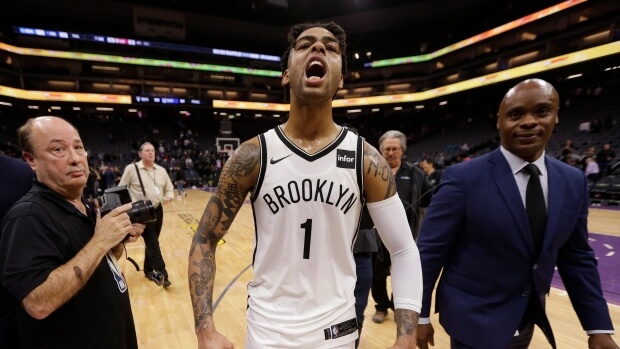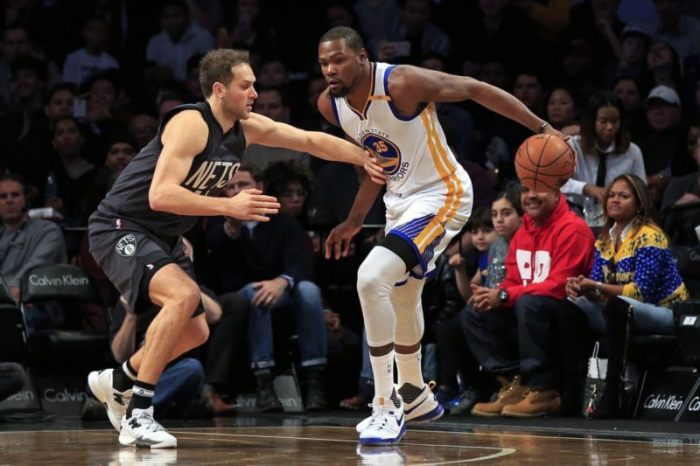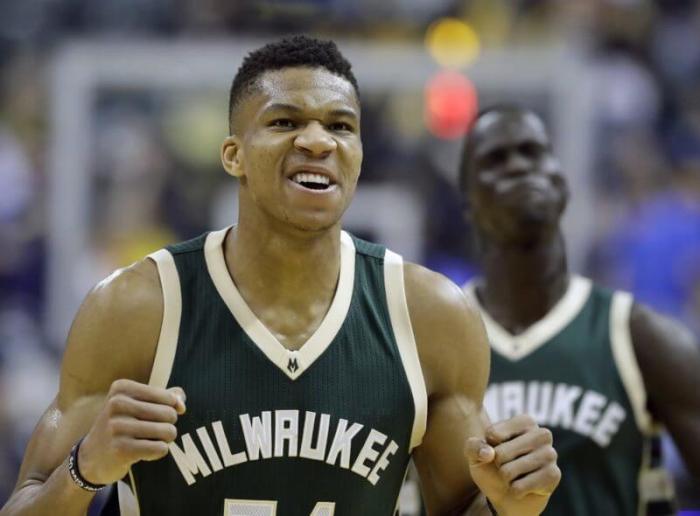We have looked at the Nets start every which way and while, for the most part, injuries to blame, I wanted to look at what was actually happening on the court. A good way to do that is to look at the four factors. Before we start though, lets talk a little bit about what the four factors are.
In his book, Basketball On Paper, Dean Oliver introduces the theory of the four factors. We’ll let him tell you about it:
What Basketball on Paper also adds is that these ratings can be broken down into four elements of the game: shooting, turnovers, rebounding, and getting to the foul line. It is those four elements, or “Four Factors,” that really start allowing a strategic understanding of the game.
He then goes on to explain that these factors aren’t just for one side of the basketball. When looking at the four factors, you want to look at both the offensive and defensive numbers:
So those are the Four Factors, but don’t forget that it is four each for both the offense and defense. A team’s offense must shoot well, but its defense must also shut down an opponent’s shooting. A team’s offense must follow its own misses with offensive boards, but it also needs to keep its opponents off the glass by getting defensive boards.
So now that we have an idea of what the four factors include, lets look at them individually in terms of the Nets season so far (All data from here on out come from Hoopdata.com):
Shooting the Ball (measured by eFG%):
- Nets eFG% = 42.27 (Last in NBA)
- Opponent eFG% = 48.20 (14th in NBA)
- Difference = -5.93 (29th in NBA)
As you can see, the Nets defense is actually right in the middle of the league. That means they have actually been playing solid defense. The problem? They can’t shoot. They are last in the NBA in eFG%, which is why the spread between the Nets eFG and their opponent is so large.
Taking Care of the Ball (Measured by Turnover Percentage)
- Nets TO% = 15.83 (29th in NBA)
- Opponent TO% = 13.60 (15th in NBA)
- Difference = 2.23 (27th in NBA)
Looking at the numbers, the Nets turn the ball on over 15% of their possessions. That is a very high number, and once again it negates the solid defense being played by the Nets. The Nets have the worst eFG% in the league, so they are already scoring on a low number of their possessions, throw in the turnovers, and you limit the possessions they score on even more. The high number of turnovers also give the Nets’ opponents more chances to score and while the defense can hold up for the most part, the more chances they get, the more likely they are to score.
Offensive Rebounding (measured by offensive rebounding percentage)
- Nets OR% = 24.67 (24th in NBA)
- Opponent OR% = 25.88 (15th in NBA)
- Difference = -1.21 (18th in NBA)
Given the high number of chances they have (they miss a lot of shots), the Nets don’t convert on a large number of their offensive rebound chances. Again, they do a good job limiting the opponents factor, this time coming in at 15th in opponent OR%, but once again, the difference is negative and on the lower half of the league.
Getting to the Free Throw Line (measured by Free Throw Rate)
This factor needs a bit of explaining first. This isn’t just a measure of how many free throws a team makes, but the frequency in which they go to the line. FT Rate = Free Throws Attempted / Field Goals Attempted.
- Nets FTR = 28.7 (22nd in NBA)
- Opponent FTR = 32.5 (20th in NBA)
- Difference = -3.78 (25th in NBA)
Here, you can see the Nets can’t get to the line as much as their opponents relative to shot attempts. This can be attributed to two things, one, the Nets take a lot of jumpers. Guys like Brook Lopez and Terrence Williams have been settling for long jumpers instead of taking it inside where fouls occur. Also, Devin Harris, one of the best at getting to the line has been out. On the other end, the Nets have a lot of guys physically outmatched by their opponent (Rafer Alston, Bobby Simmons, Trenton Hassell) and that results in a good number of fouls being committed.
A Bonus Stat
I know this isn’t a factor or anything like that, but I did find this stat interesting, and it is pretty relevant when talking about the Nets. It is Pace. Pace is the number off possessions used in a 48-minute game. The Nets’ pace is pretty low (94.3 possessions = 18th in the NBA), but it is telling for the Nets (remember when talk had the Nets being a run and gun team). So they only create a limited number of possessions, and that is why turnovers is so important. When you factor in their turnover rate the Nets only get about 79.3 possessions where they get a shot up, and because they don’t shoot well, you have a poor offense.
—
So what does all this stuff mean? Well, nothing that we don’t already know. The Nets are awful on offense, and average on defense. The biggest factor for the Nets is turnover rate, just because of the limited number of possessions that they get. It is going to be interesting as the season continues and the Nets get healthy to see if the Nets can improve the offensive numbers while keeping their defensive numbers up. If that happens, the Nets might be able to get some wins.


















